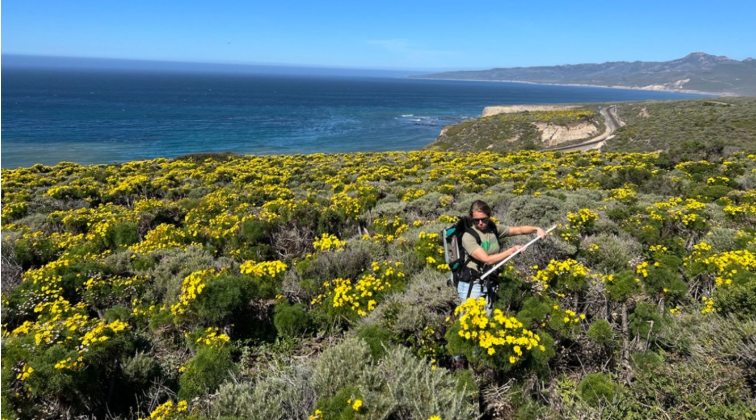News - Africa
NASA Scientist Collaborates with GLOBE for Wildflower and Tree Bloom Research
Dr. Yoseline Angel, a scientist at the University of Maryland-College Park and NASA’s Goddard Space Flight Center, is leading NASA research on wildflower and tree flower blooms and is hoping that GLOBE land cover observations will help her identify blooms in satellite data. By analyzing how the blooms look in the uploaded data, scientists can track seasonal flower cycles.
Wildflower Blooms
To help Angel’s research, GLOBE Observer is asking the
community for GLOBE land cover observations of wildflowers from
24 March to 1 June in parts of California and Arizona and
Nevada. Land cover observation will help scientists look back
in time through the satellite record to identify the timing and extent
of blooming events and understand change. Learn
more about her request and read
an article about the research.

Tree Blooms
On 15 April, Angel is participating
in a webinar with the GLOBE Trees Around the GLOBE Student
Research Campaign to discuss a novel scalable method—focusing
Following the featured science talk, Angel will explain how GLOBE
participants can use the GLOBE Observer land cover and trees tools to
find and document Tabebuia trees in Mexico through Central America and
parts of western South America.
Tabebuia is a genus of flowering plants. The ones of major
interest to Angel and her team are:
• Guayacan
amarillo (Central and South America)
• Arbol de la
primavera (Mexico)
• Cañaguate (Colombia)
• Araguaney (Venezuela)
• Roble amarillo
(South America)
This flowering tree data collection challenge has two phases:
Phase 1: Now – 30 May 2025
Phase 2: 1 August– 31 October 2025
Check back with the GLOBE Trees Around the GLOBE Student Research Campaign or the Trees Around the GLOBE Intensive Observation Periods (IOPs) for information about Phase 2 when it comes available.
Photos courtesy of Dr. Yoseline Angel, scientist, University of
Maryland-College Park and NASA’s Goddard Space Flight Center





